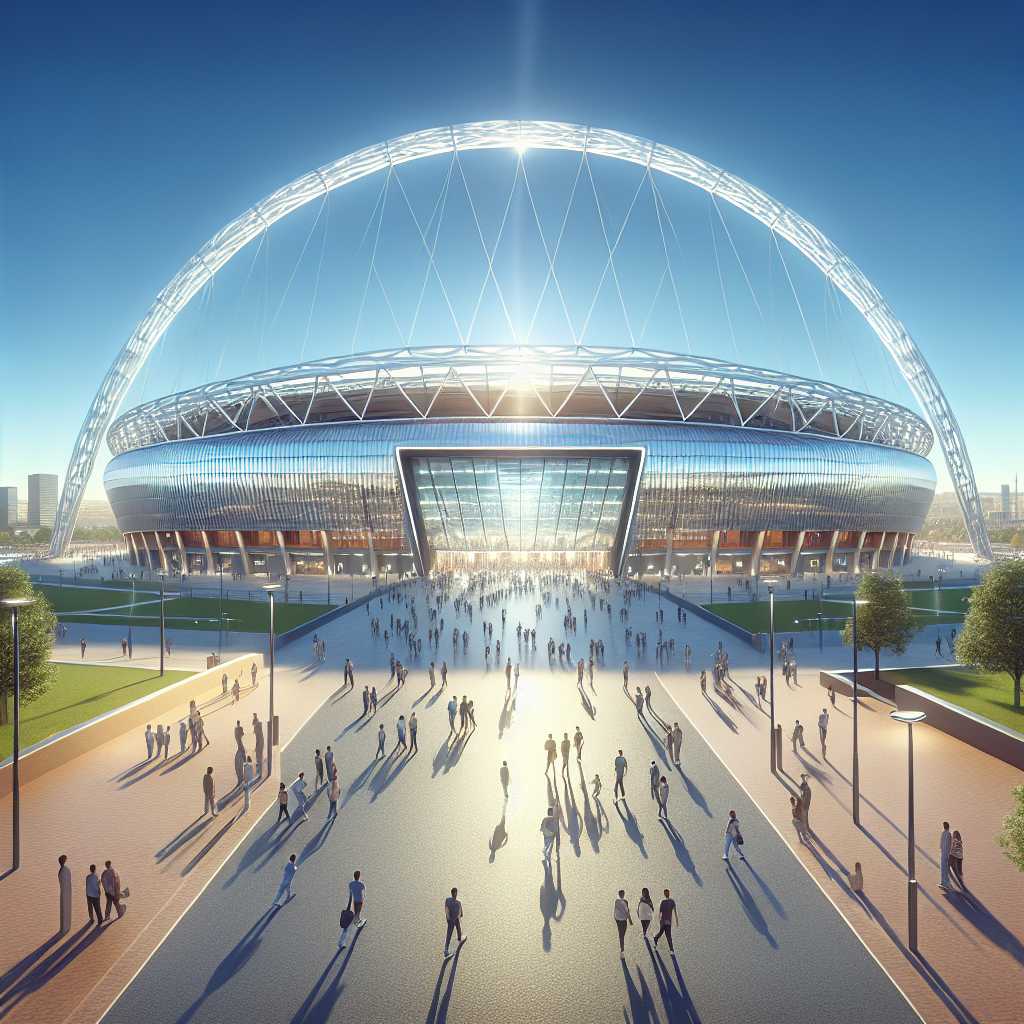The Iconic Wembley Stadium: A Venue of History and Achievement
Wembley Stadium, located in London, England, is not just a sports arena; it is a symbol of sporting history that has hosted some of the most memorable events in football and music. Known for its distinctive arch, it is a place where fans have witnessed historic football matches, concerts, and large-scale events. Its importance stretches far beyond its role as a venue for sporting events and concerts, serving as a significant cultural landmark in the UK.
History of Wembley Stadium: The Foundation of British Sporting Legacy
Wembley Stadium, originally known as Empire Stadium, was built for the British Empire Exhibition of 1924. It quickly gained prominence as a venue for major sporting events, primarily football. The old Wembley was known for its Twin Towers, which became an iconic symbol until the stadium’s demolition in 2003.
The new Wembley Stadium reopened in 2007 after a complete reconstruction costing approximately £800 million. It currently stands as the second-largest stadium in Europe with a seating capacity of 90,000. The stadium features a bold 133-meter-high arch that supports the roof structure, allowing the seating area to be free from columns that might obstruct views.
Architectural Marvel: The Design and Features of New Wembley
The design of the new Wembley Stadium combines high-tech structures with iconic imagery. Most notable is Wembley’s innovative retractable roof, covering every seat yet still allowing natural light to reach the pitch to maintain its quality. This innovative element addresses the often unpredictable British weather while maintaining an outdoor atmosphere.
Other features include public escalators (the most in any building in England), stunning acoustics for concerts, and ample amenities including restaurants and bars. However, what makes Wembley stand out even more are the little touches honoring its past — such as the 107 steps leading up to the Royal Box, which remain a distinctive feature from the original design.
A Hub of Spectacular Sports Events and Concerts
Over the years, Wembley Stadium has hosted numerous major events including the Olympic Games and UEFA Champions League finals. It has been the defining ground for football legends – it was on this turf that England won its first and only World Cup in 1966. Alongside sports, Wembley has been the staging ground for giant music acts like Queen, Michael Jackson, and Adele – demonstrating its impressive versatility as a venue.
Moreover, its capacity when configured for concerts is one of Europe’s largest, many music stars and fans cherish the opportunity to perform or attend gigs at this iconic venue.
Economic Impact: Contribution of Wembley to Local Economy
Wembley Stadium is not just an attraction—it’s an economic powerhouse. Events at Wembley attract visitors from all over the world, successfully boosting local businesses such as hotels, shops, and restaurants. It also generates considerable employment opportunities both during events and in between through maintenance and operational management.
Challenges and Developments: Ensuring Wembley’s Continued Success
Keeping an iconic stadium like Wembley top-notch involves overcoming challenges like technological advancements, maintaining high safety standards for spectators, and staying ahead in environmentally friendly operations.
Furthermore, there is always ongoing efforts to improve transportation links to cope with thousands of fans descending simultaneously on event days. Proposals for development of surrounding areas are often on the agenda to ensure that Wembley remains at the heart of a vibrant community.
Notes
Image Description
The image captures Wembley Stadium’s grandeur with a clear view of its iconic arch set against the London sky. The exterior of this modern colosseum gleams under sunlight while fans approach its entrance in anticipation of an event.
